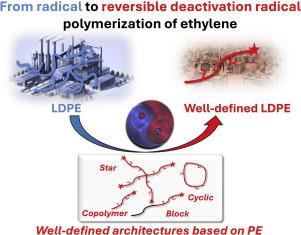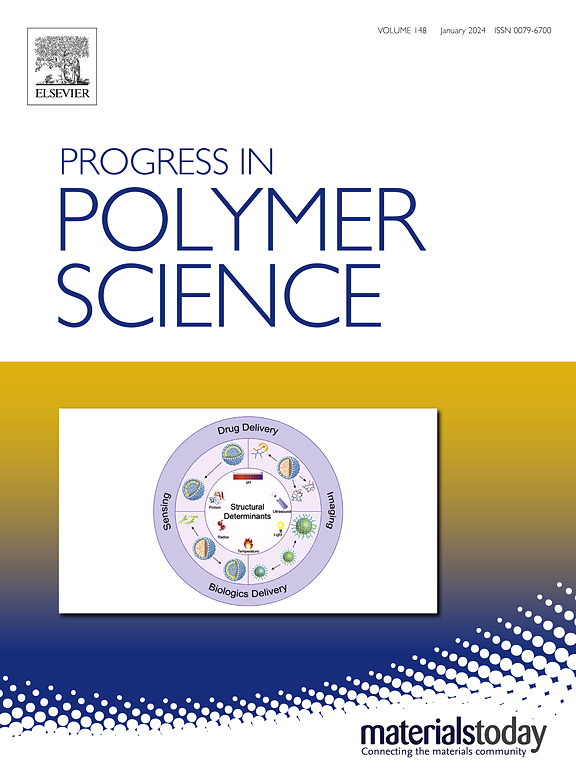From radical to reversible-deactivation radical polymerization of ethylene
IF 26.1
1区 化学
Q1 POLYMER SCIENCE
引用次数: 0
Abstract
The present paper reviews advancements in reversible-deactivation radical polymerization (RDRP) of ethylene. Polyethylene, one of the most produced polymers, is traditionally made using high-pressure radical polymerization (RP) or catalytic coordination-insertion methods. However, the harsh conditions required for RP and ethylene low reactivity have limited laboratory-scale innovations. Efforts to develop milder polymerization conditions (< 100 °C, < 500 bar) have facilitated the exploration of RDRP techniques applied to ethylene. RDRP based on reversible termination or degenerative transfer have been investigated. Among them, those based on degenerative transfer such as reversible addition-fragmentation chain transfer (RAFT), organotellurium mediated radical polymerization (TeRP) or iodine transfer polymerization (ITP) proved more successful, enabling not only controlled homopolymerization of ethylene but also the synthesis of well-defined (block) copolymers based on ethylene.

乙烯从自由基聚合到可逆失活自由基聚合
综述了乙烯的可逆-失活自由基聚合(RDRP)的研究进展。聚乙烯是产量最大的聚合物之一,传统上采用高压自由基聚合(RP)或催化配位插入法制备。然而,RP所需的苛刻条件和乙烯的低反应性限制了实验室规模的创新。努力开发更温和的聚合条件(<;100°C & lt;500 bar)促进了RDRP技术应用于乙烯的探索。研究了基于可逆终止或退行性转移的RDRP。其中,基于退化转移的方法如可逆加成-断裂链转移(RAFT)、有机碲介导的自由基聚合(TeRP)或碘转移聚合(ITP)更为成功,不仅可以实现可控的乙烯均聚,而且可以合成具有良好定义的乙烯基(嵌段)共聚物。
本文章由计算机程序翻译,如有差异,请以英文原文为准。
求助全文
约1分钟内获得全文
求助全文
来源期刊

Progress in Polymer Science
化学-高分子科学
CiteScore
48.70
自引率
1.10%
发文量
54
审稿时长
38 days
期刊介绍:
Progress in Polymer Science is a journal that publishes state-of-the-art overview articles in the field of polymer science and engineering. These articles are written by internationally recognized authorities in the discipline, making it a valuable resource for staying up-to-date with the latest developments in this rapidly growing field.
The journal serves as a link between original articles, innovations published in patents, and the most current knowledge of technology. It covers a wide range of topics within the traditional fields of polymer science, including chemistry, physics, and engineering involving polymers. Additionally, it explores interdisciplinary developing fields such as functional and specialty polymers, biomaterials, polymers in drug delivery, polymers in electronic applications, composites, conducting polymers, liquid crystalline materials, and the interphases between polymers and ceramics. The journal also highlights new fabrication techniques that are making significant contributions to the field.
The subject areas covered by Progress in Polymer Science include biomaterials, materials chemistry, organic chemistry, polymers and plastics, surfaces, coatings and films, and nanotechnology. The journal is indexed and abstracted in various databases, including Materials Science Citation Index, Chemical Abstracts, Engineering Index, Current Contents, FIZ Karlsruhe, Scopus, and INSPEC.
 求助内容:
求助内容: 应助结果提醒方式:
应助结果提醒方式:


